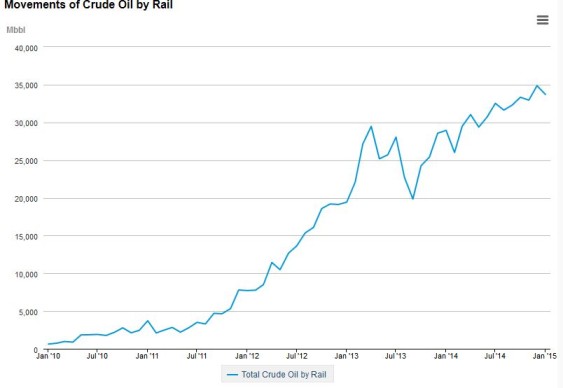Trains have come to play an increasingly large role in North American oil transport over the last several years. Now, with a recent flurry of online publications from the US Energy Information Administration, we have data that illustrate just how profound the shift has been in the United States.
Crude oil by rail shipments have skyrocketed from just over 20 million barrels in 2010 to more than 373 million barrels transported in 2014.
The growth in crude by rail has been, so far, mostly a US domestic phenomenon. The volume of crude transferred by rail from destinations and to origins within the contiguous United States has been on a steep ascent, while imports from and exports to Canada have grown more modestly.
The vast majority of crude oil by rail originates in the Midwest, primarily western North Dakota.
In 2014, the Mid-Atlantic region was the dominant destination for oil trains originating in the Midwest, while the Gulf Coast and Pacific Northwest played secondary roles.

Destinations for Midwest-originated crude oil by rail (2014). (Data from US EIA, chart by Sightline Institute.)
The West Coast states have seen steep increases in crude by rail shipments, from half a million barrels in 2010 to 50 million barrels in 2014. To date, fewer shipments have made their way to Canada.

Crude by Rail Received from Contiguous US. (Data from US EIA, chart by Sightline Institute.)
The vast majority of crude oil moved by rail to the West Coast originates in the Midwest.

Origin of crude oil by rail received by West Coast states in 2014. (Data from US EIA, chart by Sightline Institute.)












Karl Weiser
Thank you for this excellent article. We live adjacent to the tracks in Edmonds WA and have observed this increase. In the last pie graph on “origin of crude oil by rail …” the word “received” is misspelled; it is “received.”
Thank you, Karl Weiser